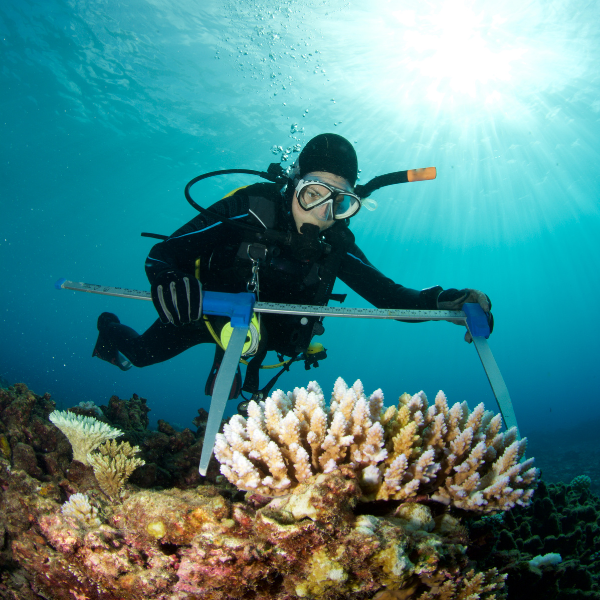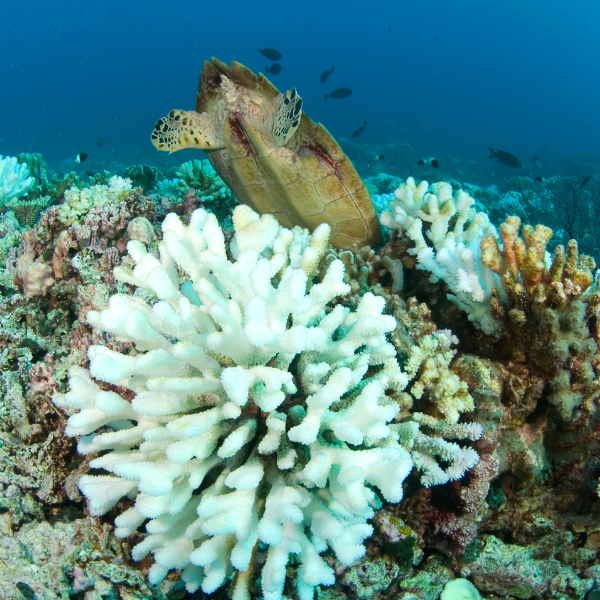Coral reefs, often referred to as the rainforests of the sea, are among the most biodiverse ecosystems on Earth. These vibrant underwater landscapes are not only home to an estimated 25% of all marine species but also serve as vital protective barriers for coastlines and provide resources for millions of people worldwide. However, coral reefs are increasingly under threat from rising ocean temperatures, a consequence of global climate change.
The phenomenon known as coral bleaching, where corals lose their symbiotic algae due to heat stress, has become a frequent and severe occurrence. In response to this growing crisis, the scientific community has underscored the importance of accurate and real-time temperature monitoring to predict and mitigate these bleaching events. As the tools and techniques for monitoring evolve, so too does our ability to protect these critical ecosystems.

The Impact of Temperature Fluctuations on Coral Health
Coral reefs are extremely sensitive to changes in water temperature. Typically thriving within a narrow range of 23°C to 26°C (73°F to79°F), corals begin to experience stress when temperatures exceed this range for extended periods. This stress can lead to coral bleaching, where corals expel the symbiotic algae (zooxanthellae) that live within their tissues, providing them with food through photosynthesis. Without these algae, corals not only lose their vibrant colors but also their primary energy source, which can lead to widespread mortality if the stress persists.
Historically, coral bleaching events were sporadic and localized. However, since the late 20th century, global coral bleaching events have become more frequent and severe, particularly during strong El Niño years. Notable bleaching events occurred in 1998, 2010, and 2015-2017, with the latter affecting over 70% of the world’s coral reefs. These events have highlighted the urgent need for continuous and precise temperature monitoring to enable timely interventions and conservation efforts.
In December 2023, NOAA’s Coral Reef Watch introduced three new alert levels in addition to the existing ones. These new levels—Level 3 (risk of multi-species mortality), Level 4 (more than half of corals could die), and Level 5 (risk of near-complete mortality)—reflect the escalating severity of heat stress on coral reefs. This update underscores the critical importance of accurate temperature data, as these alert levels are directly tied to specific temperature thresholds. Understanding these thresholds allows for more precise predictions and timely actions to protect vulnerable reefs.

Trends in Coral Reef Monitoring Technologies
In recent years, several technological advancements have significantly enhanced the ability to monitor coral reef ecosystems. These innovations are crucial for improving the accuracy of temperature data and for providing the granular insights needed to predict and mitigate coral bleaching events.
1. Remote Sensing and Satellite Data:
Remote sensing technologies, particularly those utilizing satellite data, have become indispensable in coral reef monitoring. Programs like NOAA’s Coral Reef Watch use satellites to measure sea surface temperatures and detect thermal anomalies that could lead to bleaching. These large-scale monitoring tools allow for near-real-time data collection across vast areas, providing early warnings of potential bleaching events.
2. Autonomous Underwater Vehicles (AUVs) and Drones:
AUVs and drones equipped with advanced sensors are increasingly used to monitor coral reefs at a more localized level. These technologies can collect high-resolution temperature data, along with other environmental parameters, in areas that are difficult to access or too dangerous for divers. The ability to program these vehicles for continuous monitoring makes them invaluable for tracking changes over time.
3. Smart Sensor Networks:
Smart sensor networks represent another significant advancement in coral reef monitoring. These networks involve deploying multiple sensors across a reef to continuously collect data on temperature, pH, salinity, and other critical factors. The data is often transmitted wirelessly to central systems where it can be analyzed in real-time. These networks are crucial for detecting early signs of stress in coral reefs and for providing the detailed data necessary for targeted conservation efforts.
4. Data Integration and Machine Learning:
Integrating data from various sources—such as satellites, AUVs, and in-situ sensors—allows for a more comprehensive understanding of reef health. Machine learning algorithms are increasingly being used to analyze this data, identifying patterns and predicting future bleaching events with greater accuracy. These predictive models are essential for proactive reef management and conservation strategies.
The Role of Temperature Data in Coral Conservation
Temperature data is central to understanding and mitigating coral bleaching. By monitoring sea temperatures closely, scientists can predict when and where bleaching is likely to occur, enabling them to take proactive measures such as reducing local stressors (e.g., overfishing, pollution) or deploying shade structures to protect vulnerable reefs.
For example, during the 2015-2017 global bleaching event, temperature data collected from various sources allowed conservationists to identify high-risk areas and focus their efforts on protecting the most affected reefs. These efforts included temporary closures of tourist sites, fishing restrictions, and targeted restoration projects.
The integration of advanced monitoring technologies into coral conservation practices is proving to be a game-changer. With the continuous development of these tools, the ability to predict and mitigate the effects of coral bleaching is improving, offering hope for the survival of these critical ecosystems.

Innovative Solutions for Accurate Temperature Monitoring
At beadedstream, we contribute to this vital field with our advanced Digital Temperature Cables (DTCs), which are designed to provide precise, high-resolution temperature data in challenging environments. Our cables can support up to 125 sensors, offering unparalleled flexibility in sensor placement and spacing. This allows researchers to capture detailed temperature profiles at various depths and locations within a coral reef system.
Our DTCs are also engineered for durability, featuring a polyurethane jacket that remains flexible in extreme conditions, from arctic waters to tropical seas. The integration of aramid fiber within the cable enhances its strength, ensuring it can withstand the harsh conditions of marine environments.
Importantly, our cables are designed with versatility in mind. Utilizing common 1-wire signal conversion, they easily adapt to various communication protocols (RS232, TTL, RS485, etc.), making them compatible with a wide range of data loggers and existing monitoring systems. This capability allows our DTCs to be seamlessly integrated into broader monitoring networks, enhancing the overall data collection and analysis process.
While our focus is on providing the best tools for environmental monitoring, we understand that these are just one part of a larger effort. By integrating our technology into broader monitoring systems, including those that utilize remote sensing, AUVs, and smart sensor networks, we help provide the comprehensive data needed to protect and conserve coral reefs.
Summary of Key Points
As the frequency and severity of coral bleaching events increase, the importance of accurate and real-time temperature monitoring cannot be overstated. Advances in technology, from satellite remote sensing to smart sensor networks, are providing the tools needed to better understand and protect coral reefs. The data collected through these systems is critical for predicting bleaching events and taking timely action to mitigate their impact.
As the challenges facing coral reefs continue to evolve, so too must our approaches to monitoring and conservation. By integrating advanced technologies into our practices, we can improve our ability to safeguard these ecosystems for future generations. Consider how the latest advancements in temperature monitoring could enhance your work and contribute to the broader goal of coral reef preservation.








